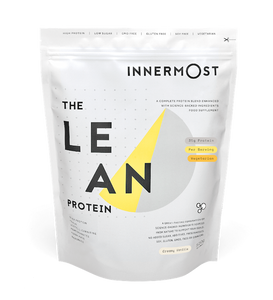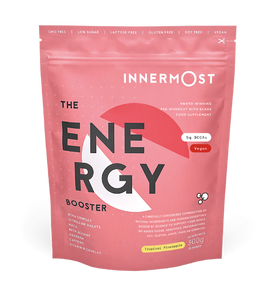We all want to live a healthy and prosperous life – right? This world is a rollercoaster and yet we are always seeking new ways to improve our lifespan to ensure we reach the ripe old age of 100. This is exactly what Dan Buettner, a National Geographic explorer, questioned with his Blue Zone Diet discovery! The term ‘Blue Zone’ may be unfamiliar to some, but what was revealed is fascinating, not to mention uplifting.
In 2000, Buettner set about his quest to find the secrets to longevity and came back with 5 places in the world in which the residents lived longer and happier lives…and still do today. Okinawa in Japan, Sardinia in Italy, Nicoya in Costa Rica, Ikaria in Greece, and Loma Linda in California were all branded the places with the world’s longest-living people due to their healthy habits.
There is high speculation as to whether our genes play a role in how long we live, however the Danish Twin Study in fact established that on average, only 20% is influenced by genes, and instead, it is all down to what we consume and the activities we partake in, as well as our frame of mind. The 5 chosen Blue Zone countries each have their own habits which slightly differ between them:
- Okinawa, Japan – Okinawans grow their own gardens which results in several things: they keep active through the gruelling nature of garden upkeep, gardening is a natural stress relief - so their minds are kept healthy, and they also grow their own fresh produce to help keep their bodies in check. Homegrown produce is always better!
- Sardinia, Italy – Sardinians limit their meat intake and only consume it on Sundays and special occasions. In return, their diet is focused on whole grains, vegetables, beans, and fruit, and they consume these for most of their meals. Surprisingly enough, they also indulge in a glass or two of red wine daily – who would have thought, huh?
- Nicoya, Costa Rica – Nicoyans banish the heavy pre-bed feasts and delight in a light, early meal instead, with diets centering around corn, beans, and squash. Wholesome and hearty!
- Ikaria, Greece – Ikarians stick to the Mediterranean diet which means plant-based foods are a focus here: vegetables, legumes, fruits, nuts, seeds, herbs, and spices are consumed on the daily. Also, due to their Orthodox Christian beliefs, they frequently partake in fasts as their religious practice.
- Loma Linda, California – Lastly, the community who live in Loma Linda follow a vegetarian or pescatarian diet and mostly try to limit sugar, salt, and refined grains.
Blue Zone Food Guidelines
Although there are variations between them, it was noted that these places collectively shared similarities in what they put into their bodies. We know you are too intrigued as to how you can switch up your own eating habits to provide a longer life…so follow this Blue Zone Food Guideline to start your journey to a prosperous adventure.
- Plant Slant
As a rule of thumb, you need to ensure that 95% of your food group is from a plant or plant-based product. This means keeping your favourite fruits and vegetables stocked up at all times – this is the best way forward. Think apples, oranges, broccoli, carrots…you name it! Just eat the rainbow and you will be where you want to be. Fresh produce is not always obtainable, we get that, so as a substitute, frozen vegetables are also fine. Many oils also derive from plants, so switch out animal-based fats like butter and cook your veggies with olive oil. Evidence has supported the consumption of olive oil as it lowers bad cholesterol and increases the good. Just don’t go overboard here.
- Limit Meat
Only eat meat twice a week (or less if feasible). Your limited meat intake should be focused on either free-range chicken, family-farmed lamb, or pork, with meats raised industrially swiped to the side. Processed meats are a massive no here…say goodbye to your beloved hot dogs and sausages. Most of the Blue Zone people only ate a small amount of meat, with these being their own pig or goat for example. If you would prefer to not consume meat at all (you go), then there are plenty of plant-based protein alternatives on the market that can take their place. We suggest lightly sauteed tofu…cooked with a little bit of olive oil – perfection!
- Go Whole
This next one can be tricky in today’s day and age. It is certainly easier to pick up the nearest convenient product you can find, but eating whole foods is admired here. The general consensus is to avoid factory-made foods, avoid foods wrapped in plastic, consume products made with no more than five ingredients, and definitely banish pre-made ready meals. For guidance, take a gander around your local farm shop – I’m sure there will be plenty of whole foods to sink your teeth into there.
- Slash Sugar
As we all know…sugar is a no. It’s as simple as that. Consume no more than seven added teaspoons a day – the Blue Zone locations mainly consumed foods with no added sugar and sweetened their tea with honey instead of spoonfuls of the sweet-tasting soluble carbohydrates - guilty? Obviously you cannot avoid this addictive stuff completely, and naturally occurring sugars in fruit are fine, just make sure to throw away your much-loved cakes, cookies, and chocolate bars to overcome sugar addiction – it’s the thing of the past. We suggest only consuming sweet foods on celebrations, think birthdays and Christmas. You will also look forward to it so much more!
- Daily Beans
Beans, beans they are good for your heart…well actually these small morsels are the building block of Blue Zone diets. Black beans in Nicoya, white beans in the Mediterranean, and soybeans in Okinawa, beans are consumed on the daily. You may or may not know that they are in fact made up of 21% protein and 77% complex carbohydrates which results in slow and steady energy instead of rapid spikes from refined carbohydrates. For guidance, ensure your cupboards are always fully stocked with a variety of cans – these can be a fantastic addition to salads, and for those who love hummus, make your very own with chickpeas, or try chickpea soup! Yes, these count.
- Beverage Rule
The Blue Zone beverage rule is straightforward: drink coffee for breakfast, tea in the afternoon, and wine at 5pm – with water at arm’s reach throughout the day. Never consume fizzy drinks, including the diet variety (sorry). Why not try our Detox Booster tea – full of healthy ingredients, this easy-to-use powder can support your immune system and maintain a healthy PH balance. For water, it is recommended to quench with seven glasses daily with studies saying that amplified hydration heightens the blood flow and reduces the chance of blood clots. As for coffee and red wine: coffee is said to lower rates of dementia and Parkinson’s disease (despite the caffeine scare), whilst red wine has been found to help your body absorb antioxidants.
Super Blue Foods
At least three of The following foods and drinks should be integrated into your daily Blue Zone diet:
- Greens – like kale, spinach, fennel tops, and chards
- Beans – lentils, black beans, pinto beans
- Nuts – almonds, peanuts, sunflower seeds, cashews, all are good!
- Sweet potatoes
- Olive oil – extra-virgin is usually the best here
- Oats
- Fruits
- Green matcha or herbal teas – there are plenty to choose from!
- Turmeric – either as a spice or tea
Summary
Whichever walk of life you are on, as the year 2023 starts its ascent, I’m sure we are all on the lookout for ways we can better ourselves both physically and mentally whilst ensuring the longevity of our journey. The Blue Zone Diet is both aspiring and easy to follow, with the benefits apparent in all five locations: Ikaria, Okinawa, Sardinia, Nicoya, and Loma Linda. Small changes are the best step forward, switching up your lifestyle slowly but surely will provide a world of good. Let’s be inspired by other cultures and adopt their happy nature. Life is for living after all right?

















